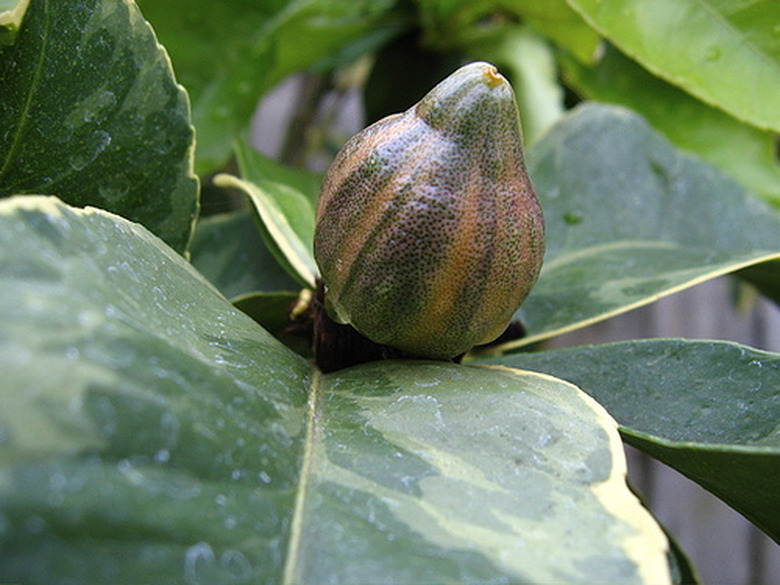How To Grow A Pink Lemon Tree
Things Needed
- Clay pot
- High quality potting soil
- All-purpose water soluble fertilizer
Nothing beats walking out into your backyard and picking a fresh, ripe, juicy lemon right from your very own tree. Even if you don't live in subtropical Zones 8-11, you can grow the Eureka pink lemon tree on your patio successfully anywhere in the USA. This easily grown plant's dwarf size makes it possible to bring it indoors when cold weather arrives, because it tops out at only 8 to 12 feet tall unpruned. The pink flesh of the lemons renders delicious juice for lemonade, and the variegated foliage and fruit provide a showy, eye-catching potted patio specimen.
Step 1
Select a healthy nursery-grown Eureka pink lemon tree of any size after all danger of frost has passed, if you want to grow it outside as long as possible. These drought resistant cultivars are easy to transplant and are not terribly fussy about the growing medium, as long as it drains well. If these trees aren't offered by local nurseries, purchase one online or by mail order, as long as you buy from a reputable retailer.
- Nothing beats walking out into your backyard and picking a fresh, ripe, juicy lemon right from your very own tree.
- Even if you don't live in subtropical Zones 8-11, you can grow the Eureka pink lemon tree on your patio successfully anywhere in the USA.
Step 2
Choose a clay pot 2 inches larger than the lemon tree's nursery container. Clay is best because it facilitates maximum drainage and "breathes" well. Partially fill it with a high quality potting mix, and position the tree so that it will be transplanted at exactly the same level it occupied in the growing pot. Firm it into position with soil and water it well, to the point of almost flooding it. Don't water again until the potting medium begins to dry out.
Step 3
Place the newly potted pink lemon tree in a warm location outdoors where it will receive at least 8 hours of sunshine daily. Continue to water just enough to keep the soil uniformly moist. Feed with a good all-purpose water soluble fertilizer according to the package instructions.
- Choose a clay pot 2 inches larger than the lemon tree's nursery container.
- Place the newly potted pink lemon tree in a warm location outdoors where it will receive at least 8 hours of sunshine daily.
Step 4
Bring your pink lemon tree indoors for the winter before the first predicted frost, which could severely damage or even kill it. Set it near a bright window so that it will receive as much natural sunlight as possible.
Step 5
Water the pink lemon tree whenever the soil feels like it's beginning to dry out. This is a particular concern for lemon trees that are cultivated indoors during the winter, when artificially heated air increases evaporation of moisture from your plants.
Step 6
Increase gradually the amount of water you give the pink lemon tree when spring brings the setting of fragrant new white blossoms, usually when the tree is 2 or 3 years old. They'll soon be followed by an abundance of beautiful yellow fruit attractively striped with green. Keep the plant uniformly moist, but never wet or dripping.
- Bring your pink lemon tree indoors for the winter before the first predicted frost, which could severely damage or even kill it.
- Increase gradually the amount of water you give the pink lemon tree when spring brings the setting of fragrant new white blossoms, usually when the tree is 2 or 3 years old.
Step 7
Prune off the top of the pink lemon tree if it's growing too tall for your taste. Don't be shy, because you're not going to hurt the plant. Trim lower limbs to shape as desired, and periodically remove any deadwood that you notice. Move the pink lemon tree back outside into full sunshine after all risk of frost has passed.
